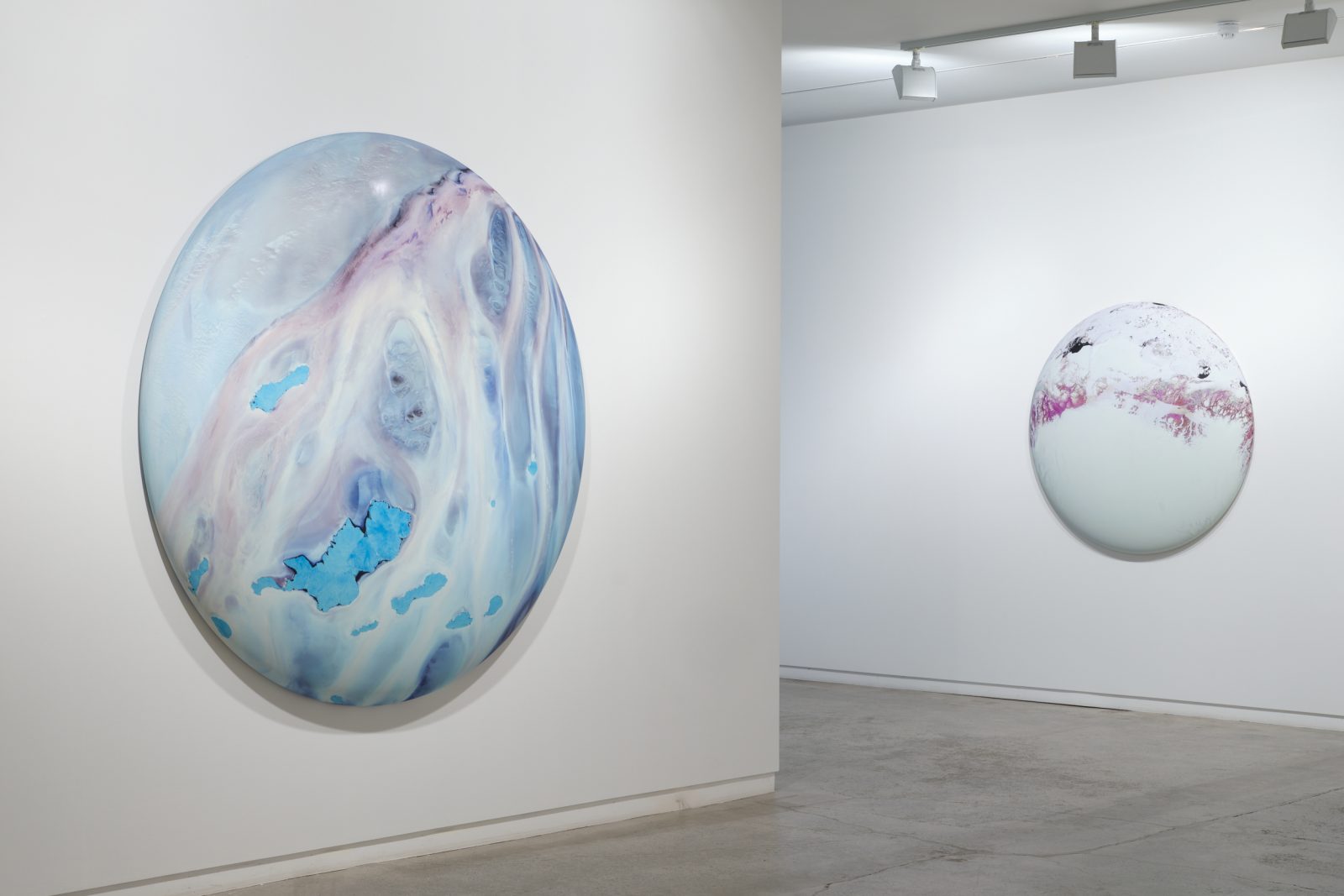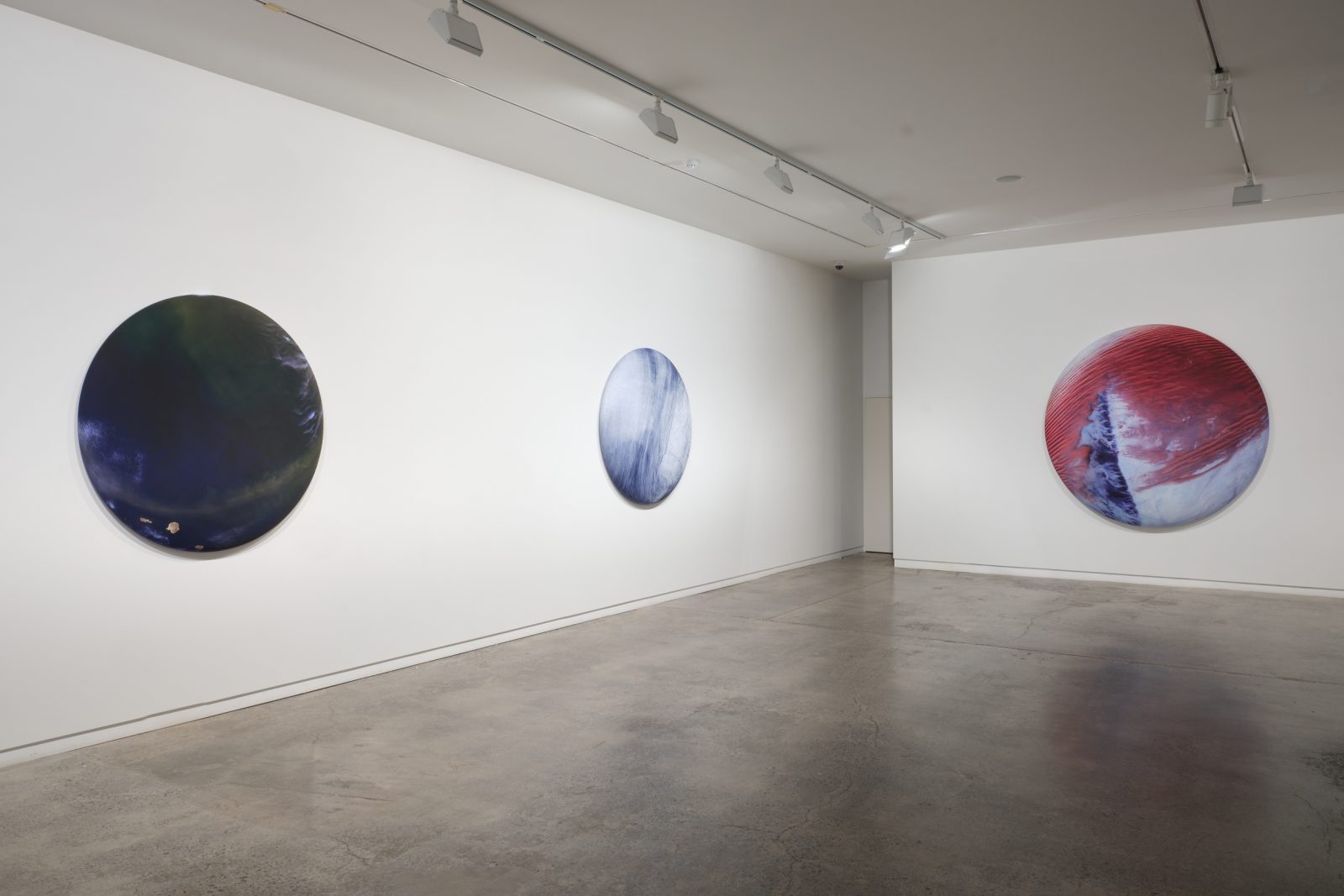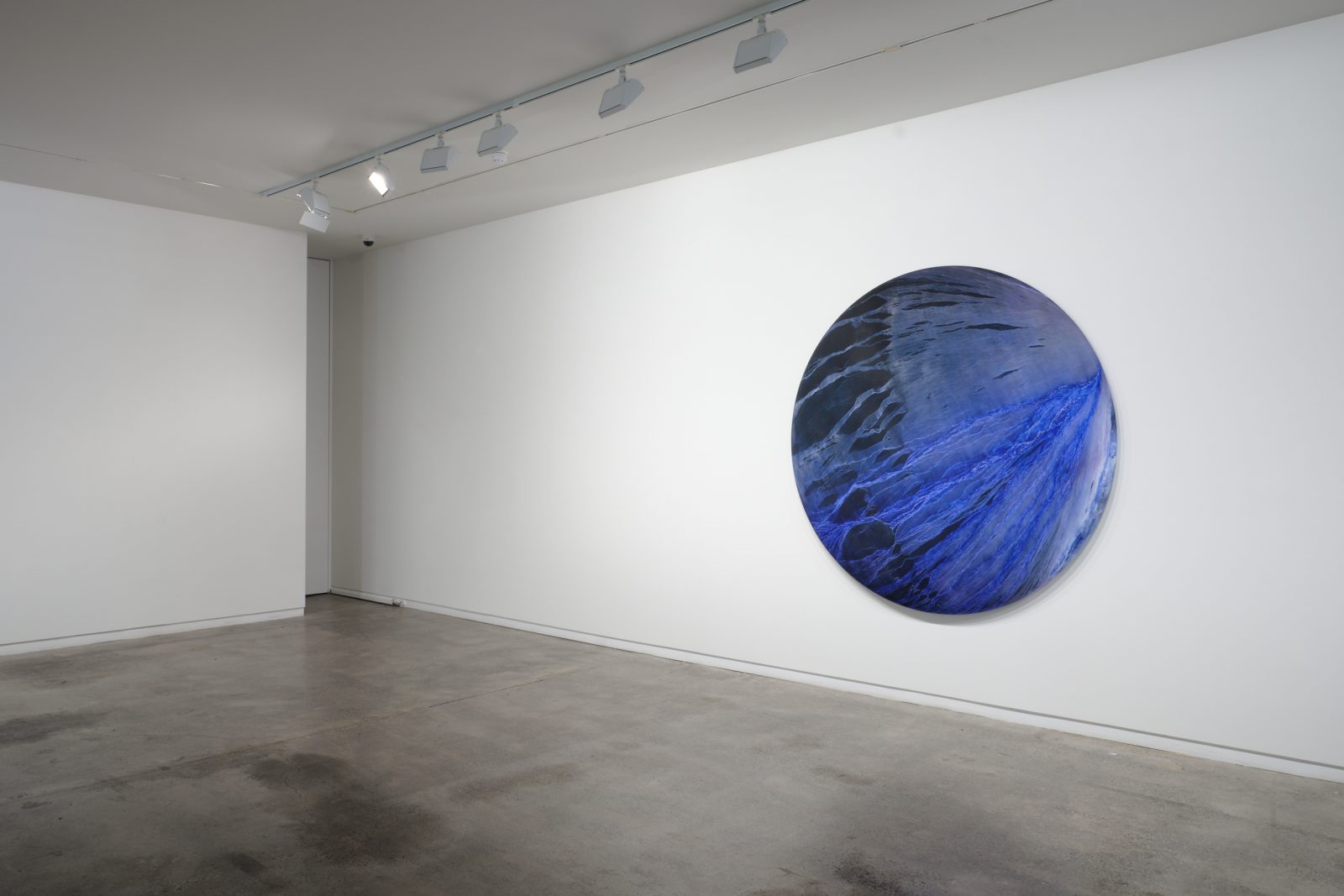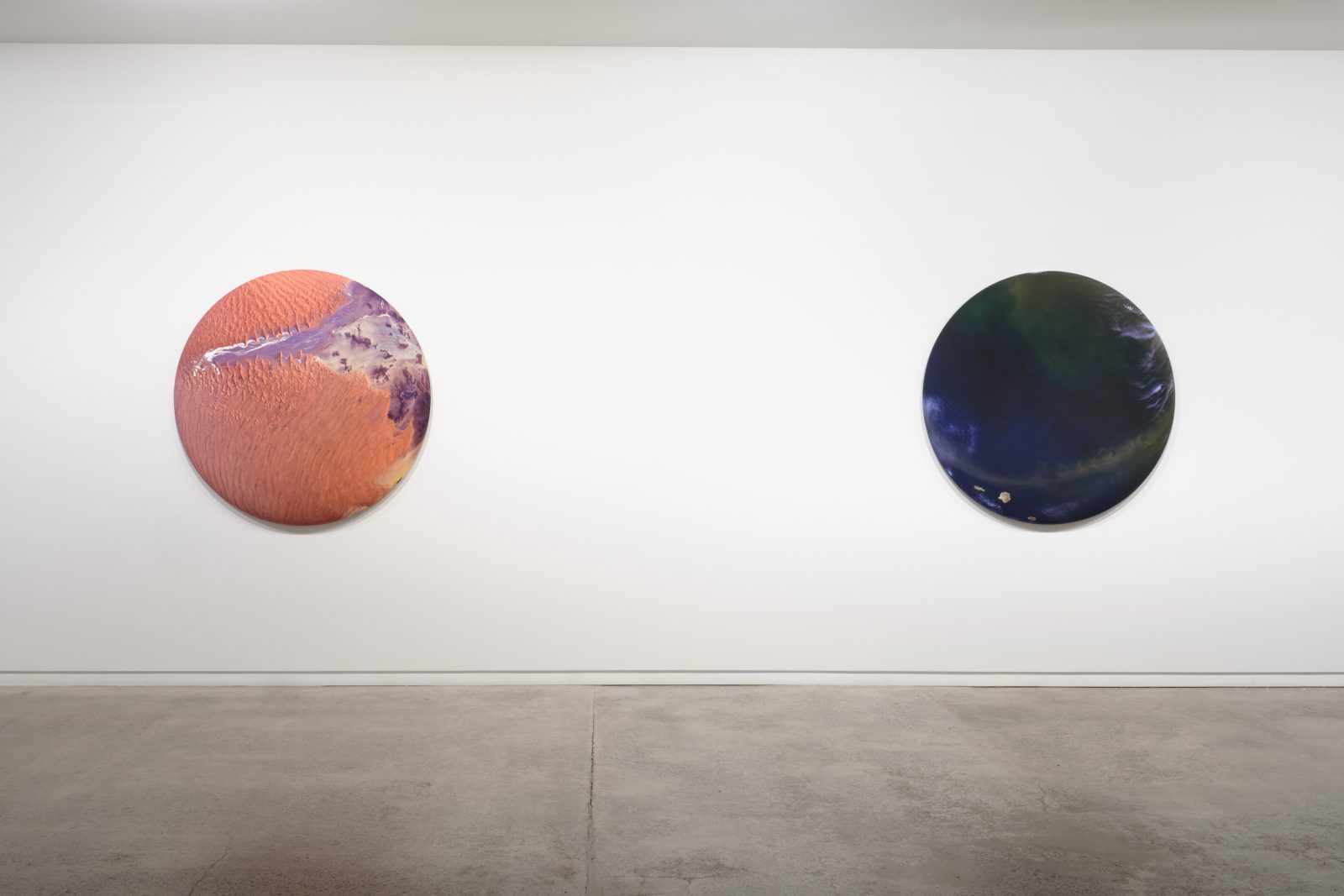Elizabeth Thomson
Lateral Theories
23 April - 28 May 2021
Artist talk | Saturday 24 April 1pm
Independent curator and writer, Gregory O’Brien in conversation with Elizabeth Thomson
Be then our visible world, our world invisible,
Edith Sitwell Invocation
In Elizabeth Thomson’s new works, exhibited at Two Rooms, each visitor to the gallery becomes the centre of an astronomical formation, a stellar presence, around which a sequence of planetary orbs is arrayed, each frozen on its own orbit. ‘Lateral Theories’ presents the heavenly bodies known as ‘exoplanets’ as territories of Thomson’s own experience and responsiveness. Constructed from fibreglass and resin, overlaid with vinyl and lacquer, the works take us into territories of disorientation and wonderment.
As well as drawing upon her long-standing fascination with aerial perspectives and satellite imaging, the works were shaped by recent encounters with silica deposits in the geothermal fields of the Chilean interior and the Atacama desert. In recent months she has also spent time researching ‘exoplanets’— planets orbiting other stars, as distinct from the planets of our own solar system. As the National Aeronautics and Space Association (NASA) informs us: ‘Exoplanets are very hard to see directly with telescopes. They are hidden by the bright glare of the stars they orbit.’ Much of the scientific interest in exoplanets stems from whether they might be habitable, and what they might tell us.
Lateral Theories is an encounter between the ‘visible’ planet we know and the ‘invisible’ planets that exist within, beyond or alongside our own. The works bring to mind the words of John Donne, as quoted by Colin McCahon in a 1955 painting: ‘Let us possess one world, each has one and is one.’ The tondos are an invocation of worlds that exist between natural history and personal experience, ‘science’ and ‘fiction’, between the quotidian and the dream-state, between the Enlightenment and Romanticism…
At once ‘worldly’ and ‘otherworldly’, they are a grasping or embrace of the physical realm, in all its strangeness and lyricism, and a ‘letting go’, a setting sail for territories beyond. Thomson’s ‘exoplanets’ mark an outer limit of her progress to date. They also bring us near to the planet on which we live—they deliver us back to our home parish or province, with its tides, weather patterns, oceanic expanses and geology.
Moving into the gravitational or magnetic field of the individual orbs, we—the viewers—are rendered as aerialists in free fall, plummeting from infinite, abstract space into yet another kind of boundlessness.
Gregory O’Brien, April 2021
This project has been realised with the generous support of Creative New Zealand
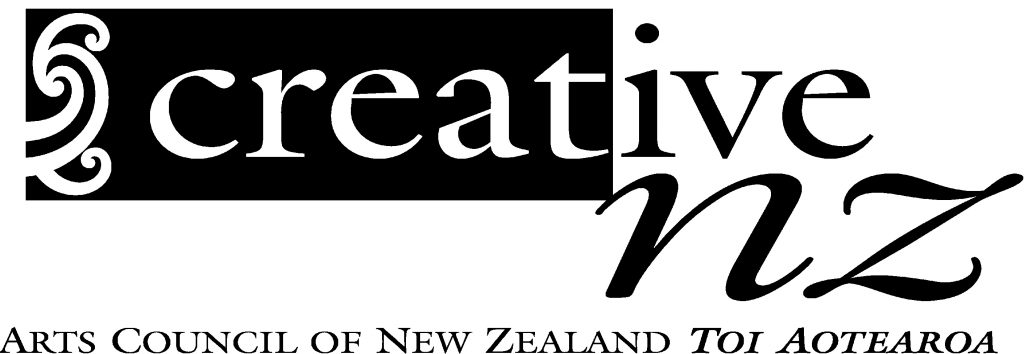
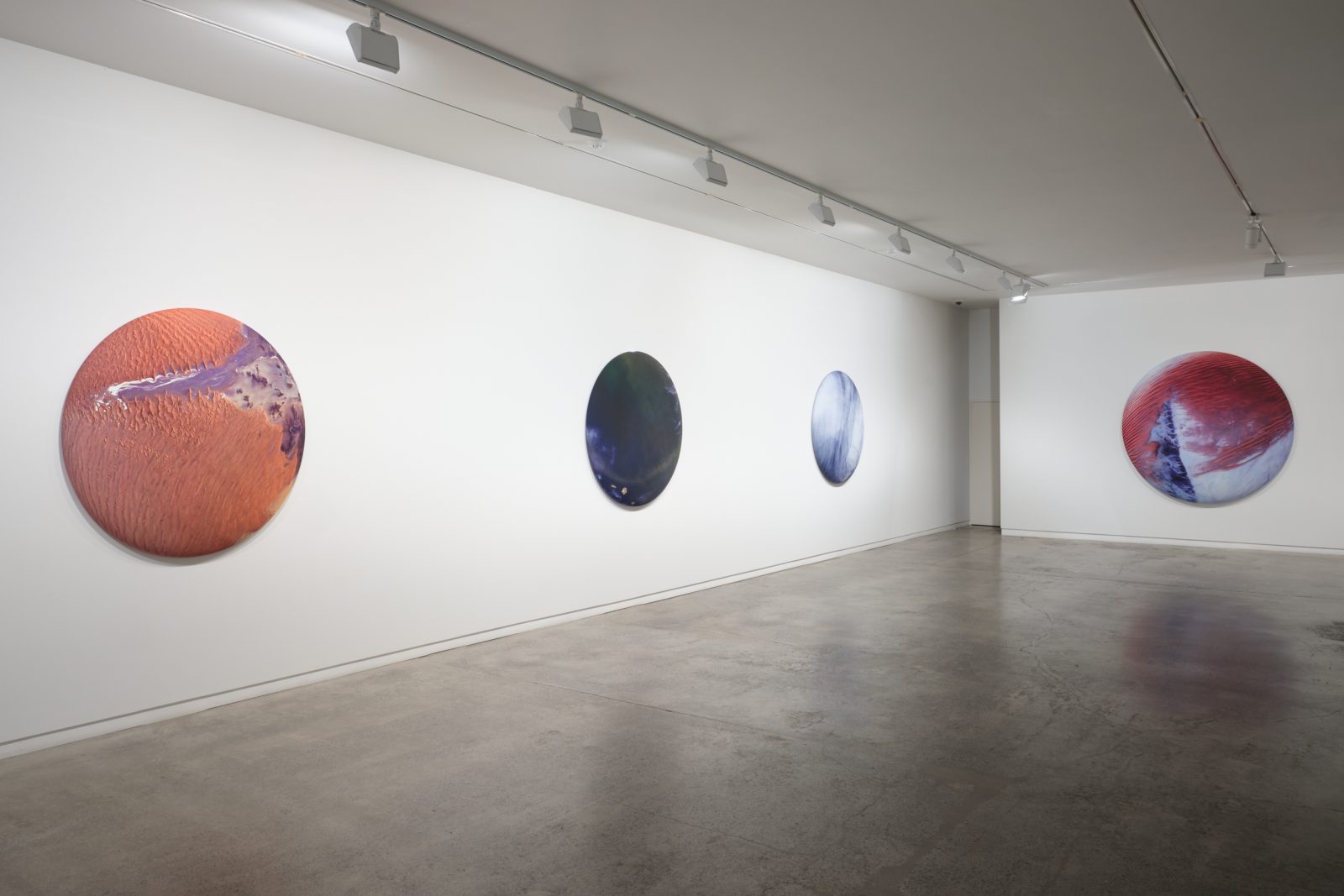
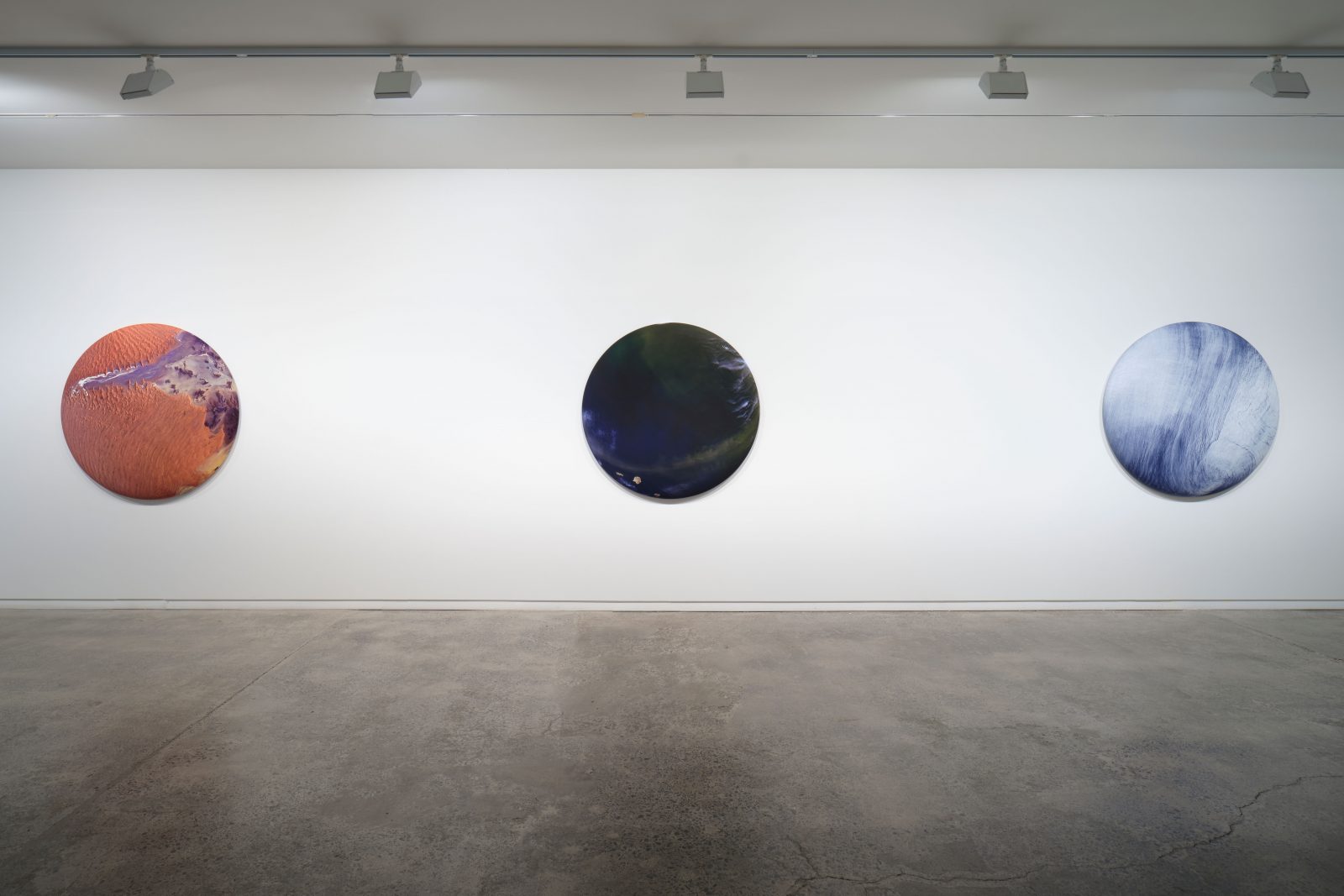
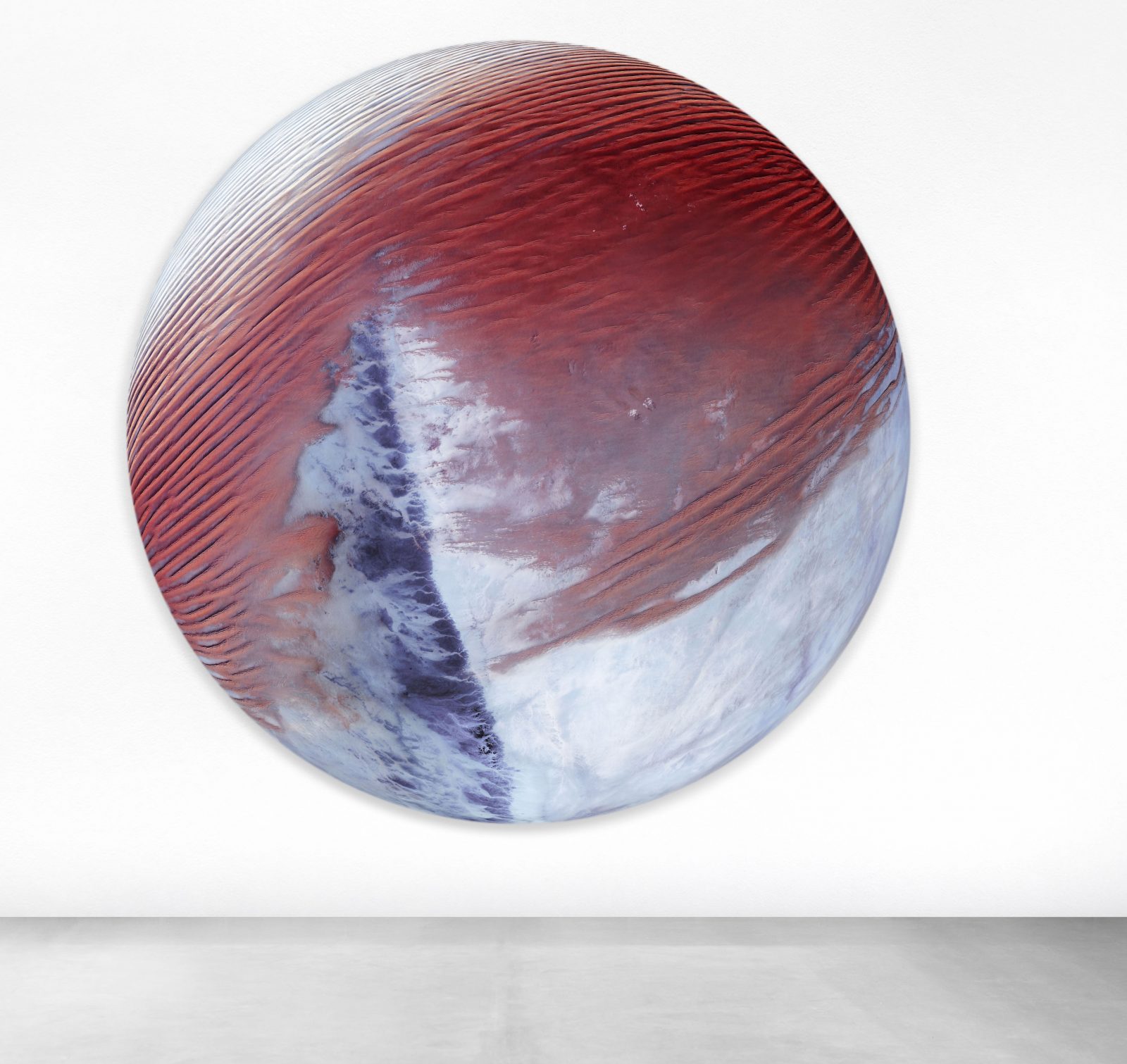
2000 x 2000 x 195 mm
lacquer, cast vinyl film, fibreglass and resin
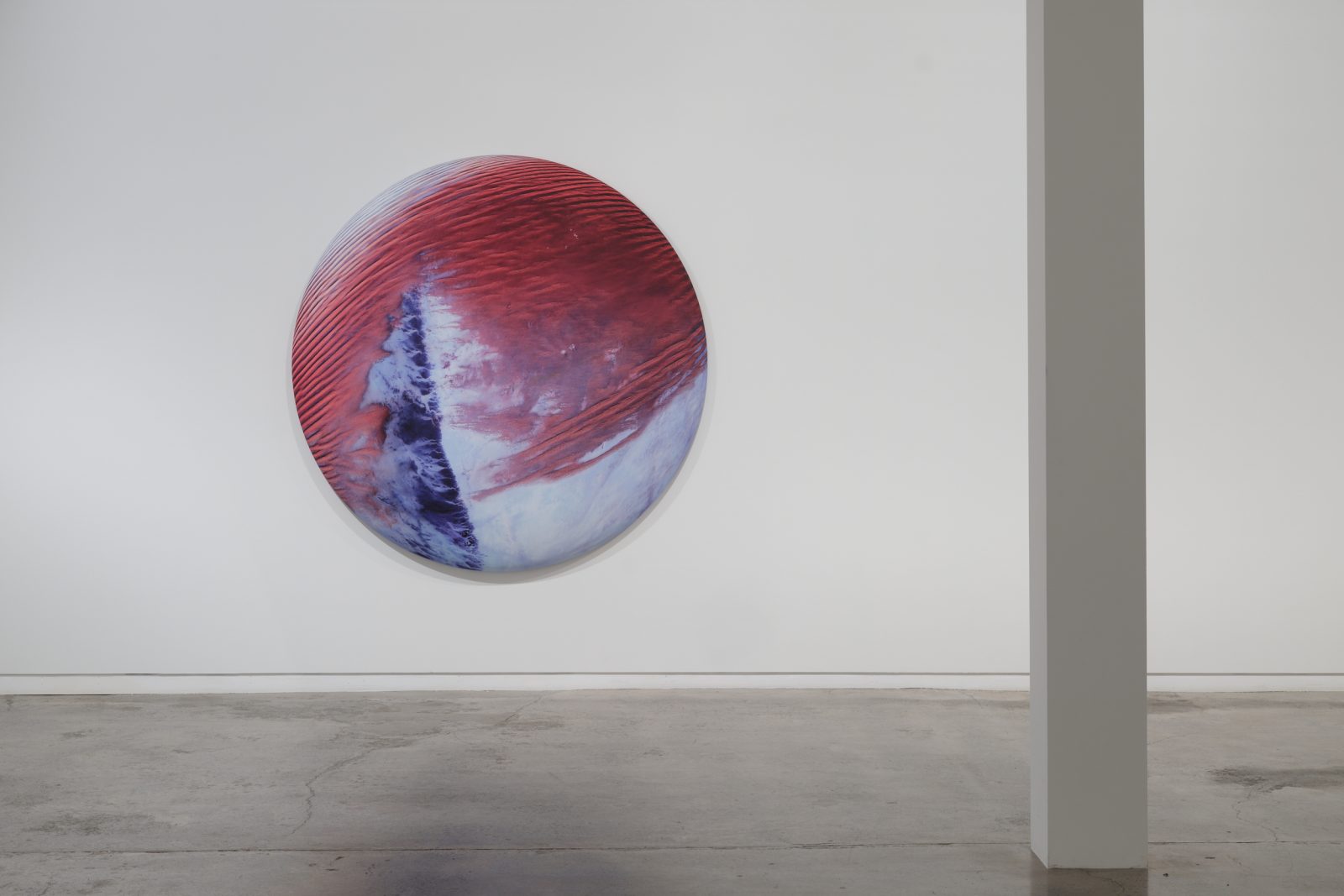
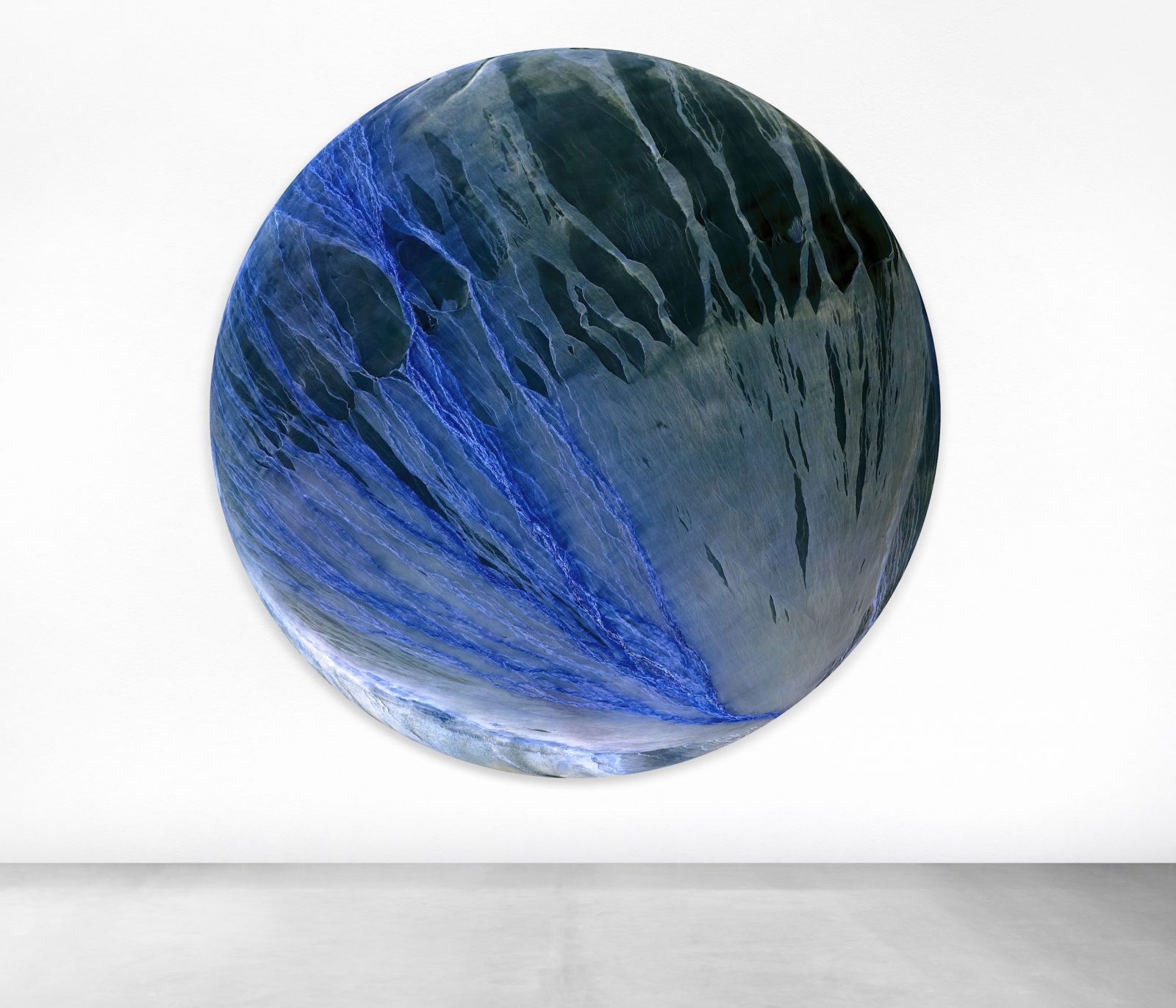
2000 x 2000 x 195 mm
Lacquer, cast vinyl film, fibreglass and resin
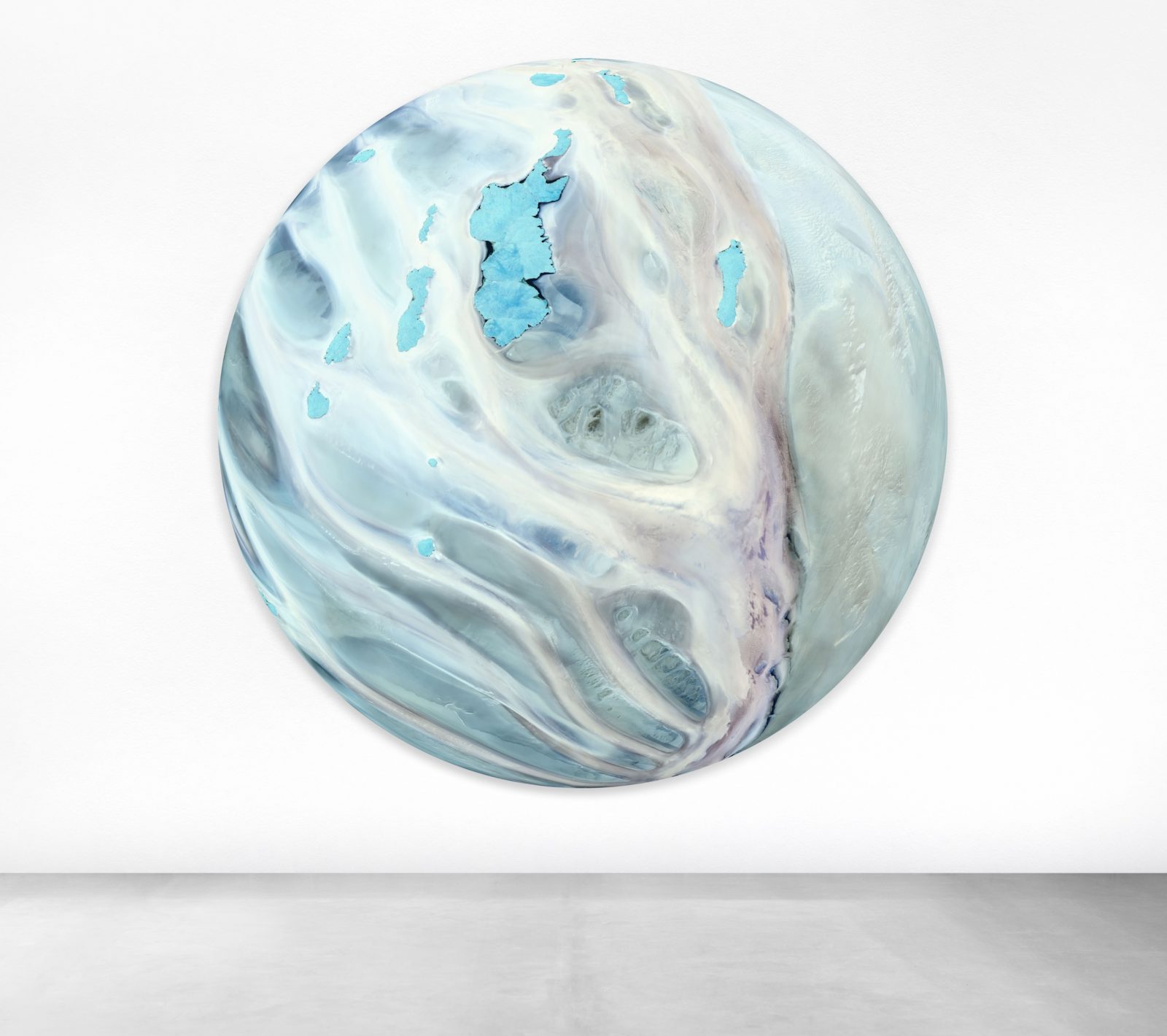
2000 x 2000 x 195 mm
lacquer, cast vinyl film, fibreglass and resin
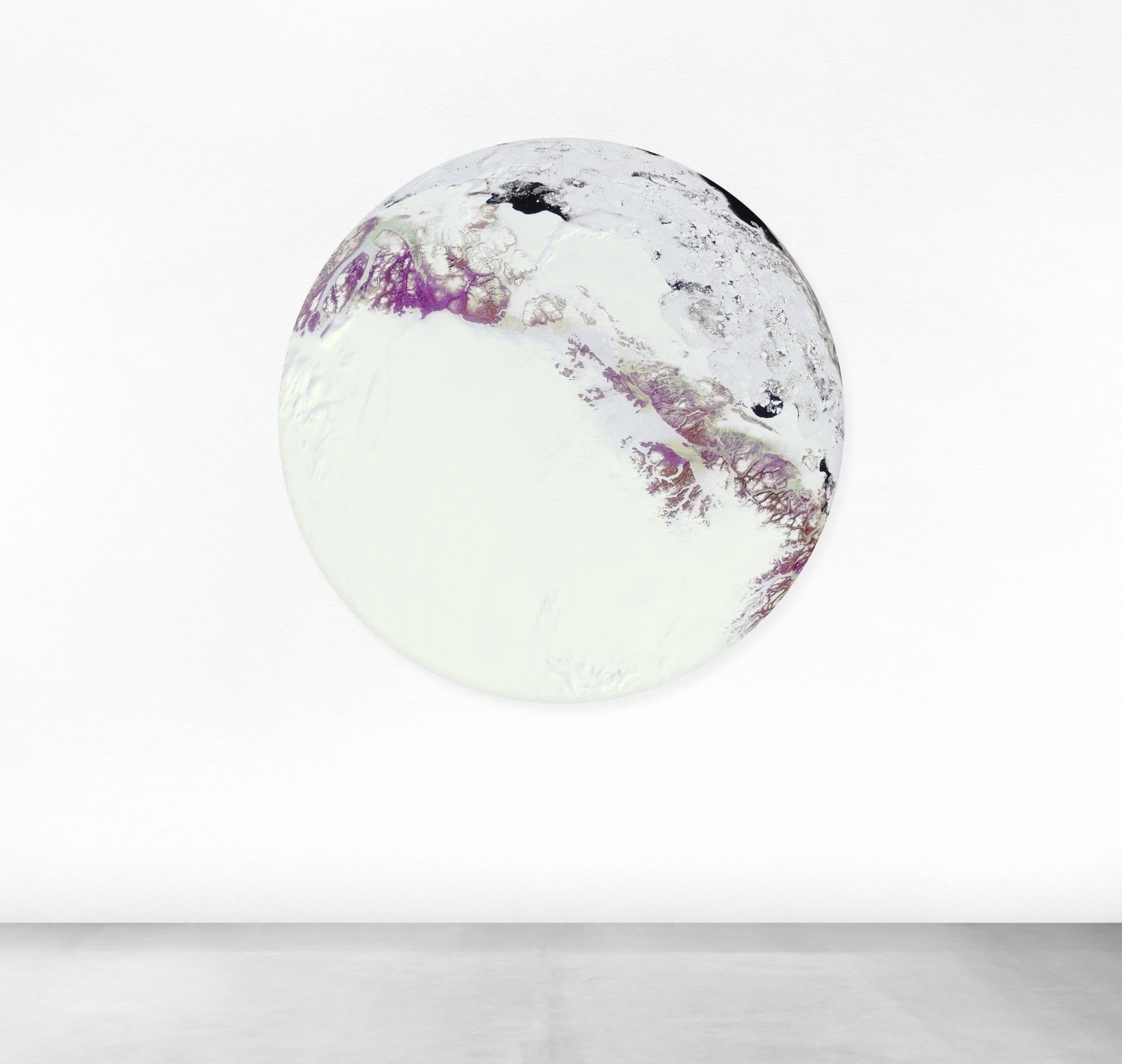
1387 x 1387 x 125 mm
lacquer, cast vinyl film, fibreglass and resin
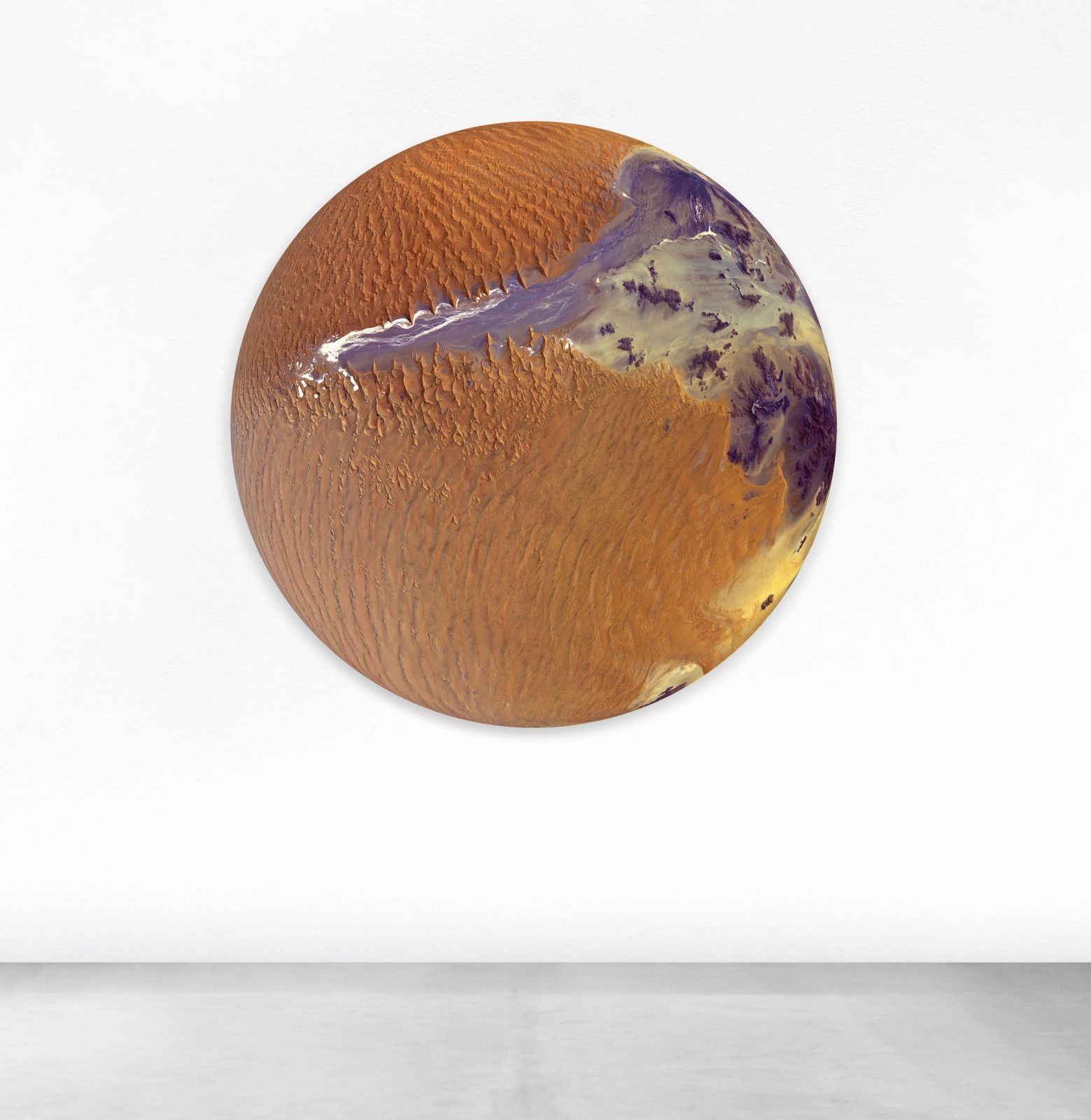
1387 x 1387 x 125 mm
lacquer, cast vinyl film, fibreglass and resin
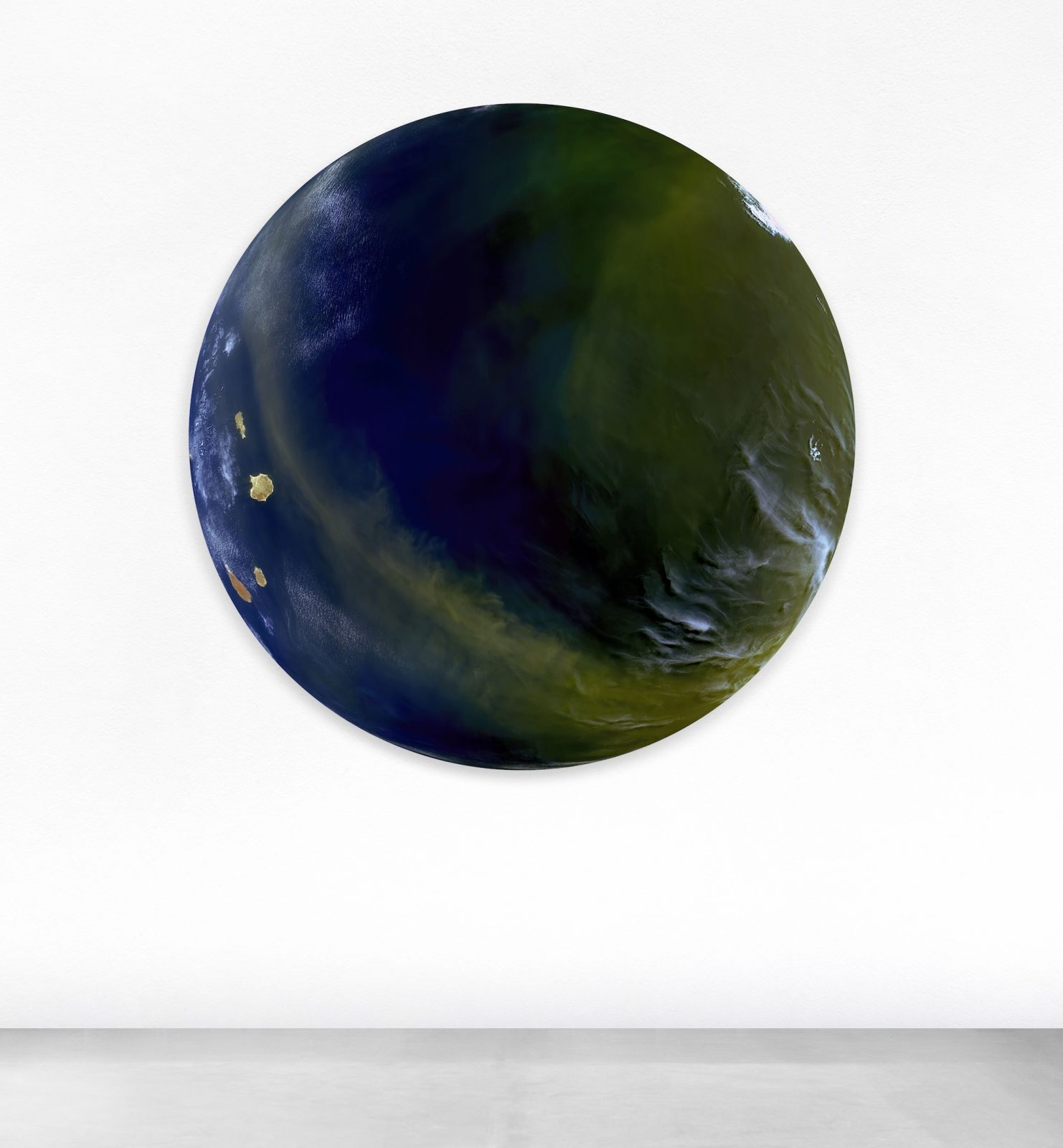
1387 x 1387 x 125 mm
Lacquer, cast vinyl film, fibreglass and resin
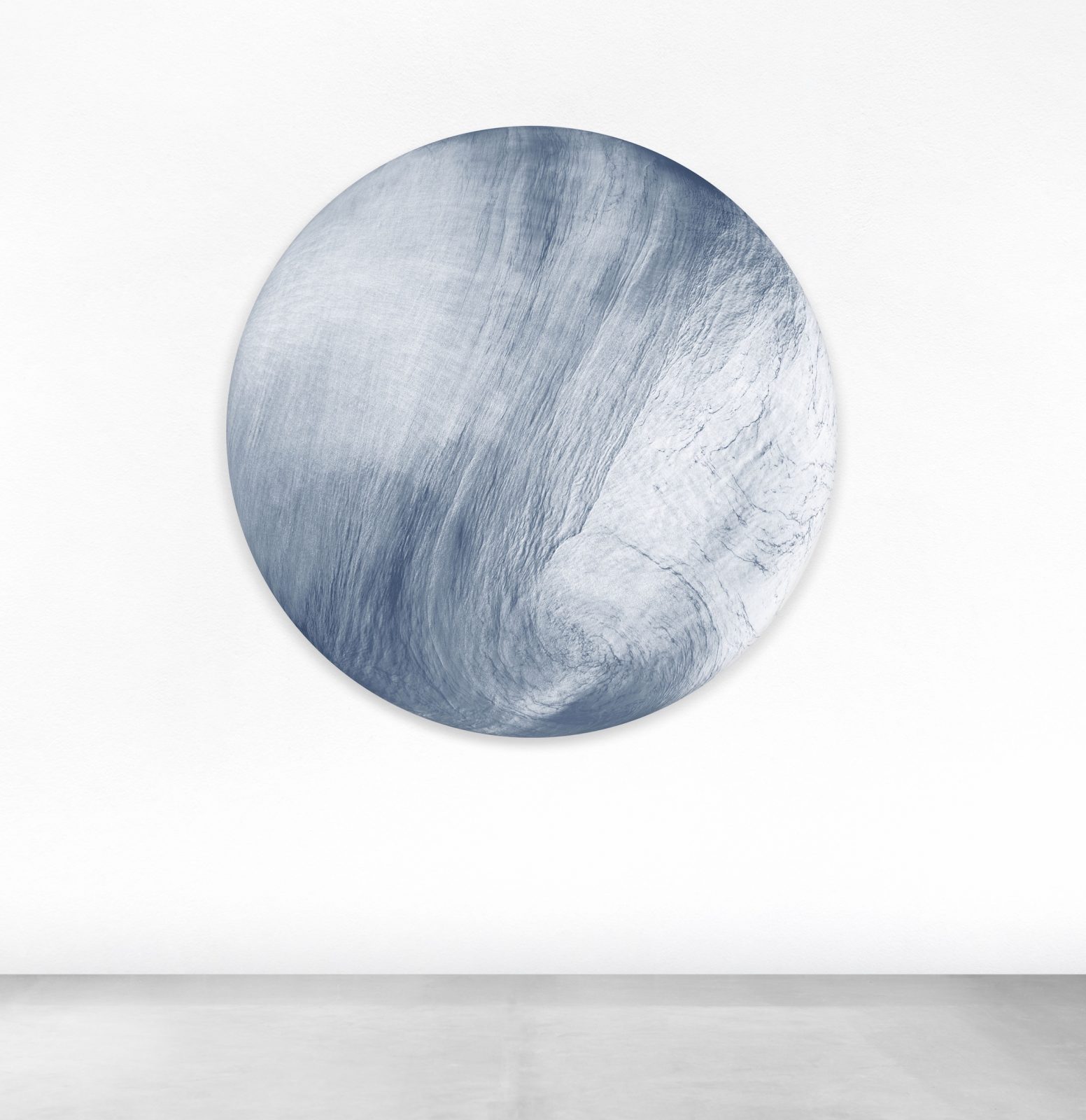
1387 x 1387 x 125 mm
Lacquer, cast vinyl film, fibreglass and resin
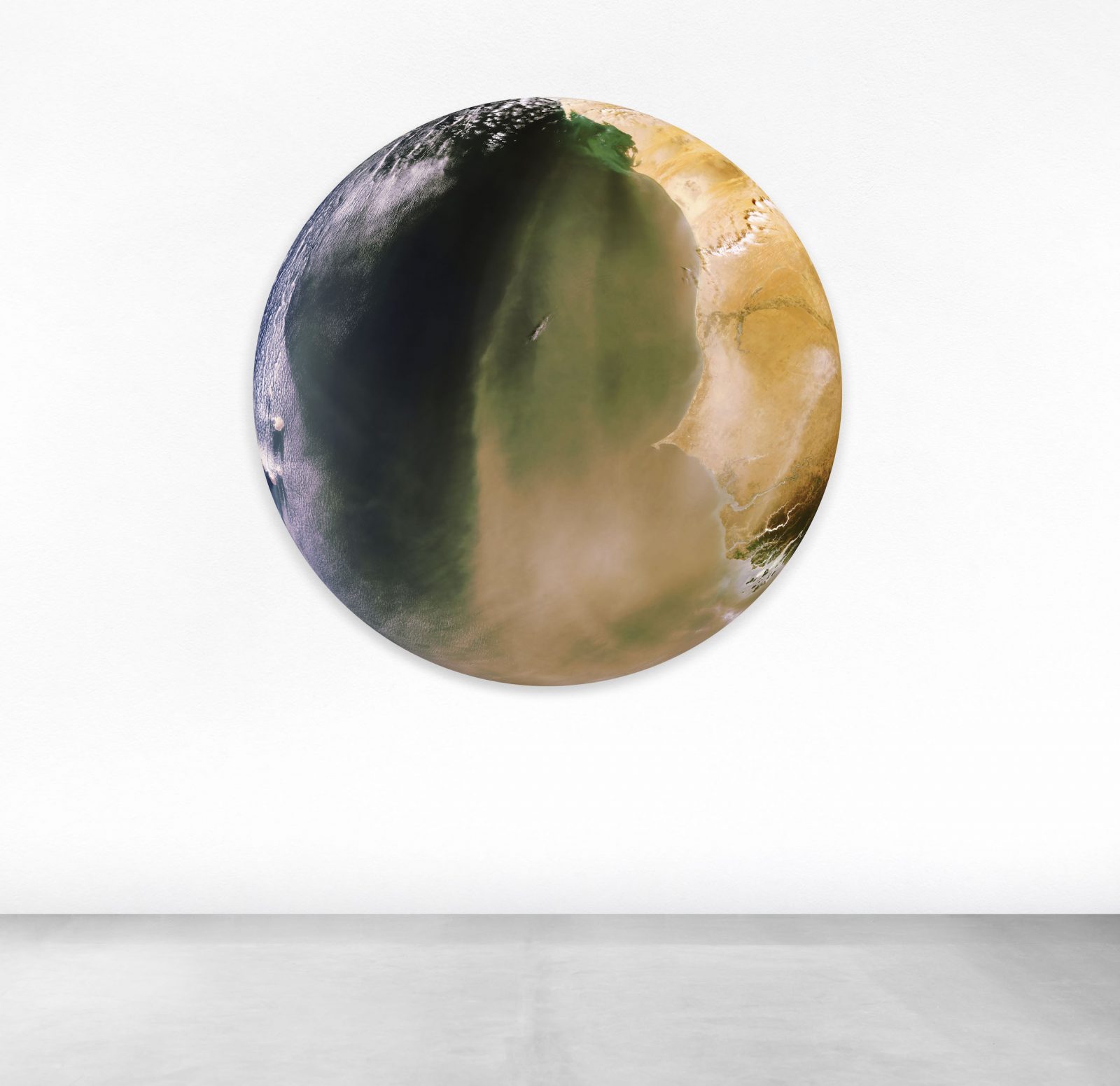
1387 x 1387 x 125 mm
lacquer, cast vinyl film, fibreglass and resin
